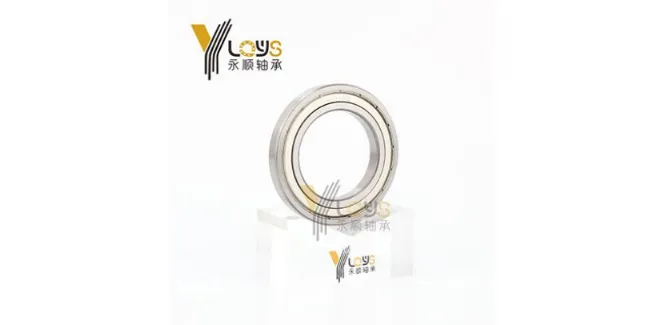Тонкостенние глубокие подшипники: повышение точности в робототехнике
2025-10-16

Введение в тонкостенные подшипники для робототехники
В робототехнике каждый миллиметр имеет значение. Пространство внутри роботизированных суставов всегда ограничено, и инженеров постоянно заставляют делать больше за меньше. Тонкостенние глубокие подшипники вписываются прямо в эту задачу. Они похожи на стандартные подшипники, но имеют более тонкое поперечное сечение, что делает их легче, но при этом достаточно сильными для обработки требовательных нагрузок. Для всех, кто разрабатывает компактные машины, этот тип подшипников быстро становится решением.
Основные особенности, которые поддерживают высокоточное движение
Ультратонкий поперечный сечение для компактных пространств
Тонкостенное конструкции уменьшают разрыв между внутренним и внешним кольцом. Это позволяет инженерам робототехники экономить ценное пространство, не ставя под угрозу стабильность. Это особенно полезно в роботизированных запястьях или пальцах, где даже несколько миллиметров сэкономленного пространства могут обеспечить совершенно новый диапазон движения.
Постоянная точность и плавная работа
Роботы полагаются на повторяемость. Подшипник, который смещается или вибрирует, разрушает точность. Эти тонкие профильные подшипники построены для поддержания последовательного позиционирования, обеспечивая плавную и точную работу. Речь идет не о том, чтобы быть фантастическим, а о уменьшении микроошибок, которые могут размножаться в течение тысяч циклов.
Несколько вариантов уплотнения для различных сред
От роботов чистых комнат в медицинских лабораториях до заводских роботов, подвергающихся воздействию пыли, герметических веществ. Тонкостенные подшипники доступны в версиях с металлическими щитами (ZZ), резиновыми уплотнениями (2RS) или открытыми конструкциями. Правильный выбор зависит от того, насколько жестка окружающая среда. Простое напоминание: не пропускайте уплотнение; Это часто место, где срок службы приобретается или теряется.
Преимущества для робототехники и автоматизации
Улучшение стабильности движения и позиционирования
Тонкостенной подшипник уменьшает отклонение при нагрузке. Это означает, что рука робота может плавно двигаться без нежелательной игры. Когда речь идет о точных задачах, таких как сборка электронных устройств, это не роскошь, это требование.
Снижение веса в роботизированных руках
Каждый грамм, сохраненный в руке, снижает необходимый крутящий момент двигателя. Легкие подшипники непосредственно снижают потребление энергии и повышают эффективность. Это также делает роботизированные конструкции более гибкими. В отраслях, стремящихся к эффективности, это большой плюс.
Балансирование долговечности и требований к нагрузке
Несмотря на более легкую конструкцию, эти подшипники все еще несут значительные нагрузки. Они разработаны для обработки как радиальных, так и осивых сил, с которыми справляются роботизированные соединения. Когда бюджеты на техническое обслуживание ограничены, долговечность - это то, что инженеры тихо ценят больше всего.

Проблемы при выборе подшипников для робототехники
Балансирование размера, силы и стоимости
Дизайнерские команды часто сталкиваются с компромиссами. Идите слишком мало, и вы рискуете преждевременной неудачей. Иди слишком большой, и ты теряешь пространство. Фактор стоимости всегда присутствует, тонкостенные подшипники более продвинуты, чем стандартные подшипники, поэтому выбор правильного подхода является решением, заслуживающим тщательного размышления.
Тепловая и высокоскоростная производительность
Робототехника часто включает в себя быстрые, повторяющиеся движения. Накопление тепла может сократить срок службы подшипников, если выбраны неправильные материалы или смазочные материалы. Инженеры должны всегда проверять номинальный диапазон скорости и температуры.
Обеспечение технического обслуживания и надежности
Роботизированные системы нелегко обслуживать после установки. Выбор подшипника с правильными уплотнениями и правильным внутренним пробелом уменьшает необходимость постоянных проверок. Для автоматических линий, работающих днем и ночью, это крайне важно.
Как Shanghai Yongheshun добавляет ценность для инженеров
Shanghai Yongheshun не только поставляет подшипники, он создает решения. Компания производит глубокая канавка и тонкостенные подшипники под строгими ISO сертифицированными процессами. Контроль качества, от кования до шлифования, встроен в каждый этап производства.
По сравнению с такими крупными компаниями, как SKF или NSK, которые известны во всем мире своими премиальными ценами, Yongheshun предлагает конкурентоспособную стоимость без отрезания углов точности. Для OEM и производителей роботов это означает доступ к качеству международного уровня по цене, которая поддерживает масштабирование. Кроме того, Yongheshun принимает индивидуальные требования, будь то нестандартные размеры, специальные покрытия или частная маркировка. Эта гибкость - это то, что глобальные гиганты редко обеспечивают при такой же отзывчивости.
Примеры использования в промышленности и реальные примеры
Роботизированные руки для электроники
На сборных линиях ПХД, где каждое движение должно быть точным, тонкостенные подшипники обеспечивают, чтобы роботизированные руки точно размещали компоненты и повторяли движение тысячи раз без дрейфа.
Автоматизированные производственные линии
Конвейеры и роботы для сбора и размещения часто используют компактные подшипники для размещения внутри узких корпусов. Тонкостенные подшипники справляются с этим, продлевая срок службы. Чем меньше простоя, тем лучше для заводов, работающих в три смены.
Аэрокосмическая и медицинская робототехника
Экономия пространства и точность делают эти подшипники подходящими для хирургических роботов и аэрокосмических инструментов, где вес и точность находятся под строгим контролем.
Выбор правильного подшипника для нужд роботов
Ключевые факторы выбора
Инженеры должны оценить направление нагрузки, максимальную скорость, условия окружающей среды и смазку перед принятием решения. Неправильный выбор на раннем этапе означает более высокие затраты на обслуживание позже.
Сравнение типов уплотнений
Металлические щиты хорошо подходят для чистых сред, резиновые уплотнения лучше работают там, где присутствует пыль или влага, а открытые конструкции подходят для контролируемых приложений. Иногда немного более высокая первоначальная стоимость герметических подшипников экономит годы проблем.
Советы по продлению срока службы
Держите смазку последовательной, избегайте перегрузки вала и выбирайте подшипники с правильным внутренним пробелом. Простые привычки, но они делают большую разницу.
Вывод: Будущее тонких профильных подшипников в робототехнике
По мере того как роботы играют более сложные роли в промышленности, подшипники тихо останутся в центре производительности. Тонкостенние глубокие подшипники сочетают в себе эффективность пространства, стабильность и долговечность, что делает их незаменимыми для современной автоматизации. Для компаний, стремящихся сбалансировать международные стандарты с практическими бюджетами, Шанхай Yongheshun выделяется как надежный партнер, обеспечивающий как качество, так и гибкость.
Часто задаваемые вопросы
Q1: Как долго могут длиться тонкие профильные подшипники в робототехнике?
А: Продолжительность жизни зависит от нагрузки, скорости и смазки. При правильной настройке они могут работать годами без замены.
Q2: Подходят ли они для высокоскоростных роботизированных рук?
А: Да, при условии, что вы выберете правильное размещение и смазку для управления теплом.
Q3: Каковы различия между металлическими щитами и резиновыми уплотнениями?
Ответ: Металлические щиты защищают от больших частиц и уменьшают трение, в то время как резиновые уплотнения более эффективно блокируют мелкую пыль и влагу.
Q4: Могут ли тонкостенные подшипники заменить стандартные подшипники в существующих роботах?
О: Во многих случаях да, особенно если целью является экономия места. Точные размеры должны соответствовать.
Q5: Поддерживает ли Шанхай Yongheshun настройку?
О: Да, компания предлагает индивидуальные решения, включая нестандартные конструкции и частную маркировку.







